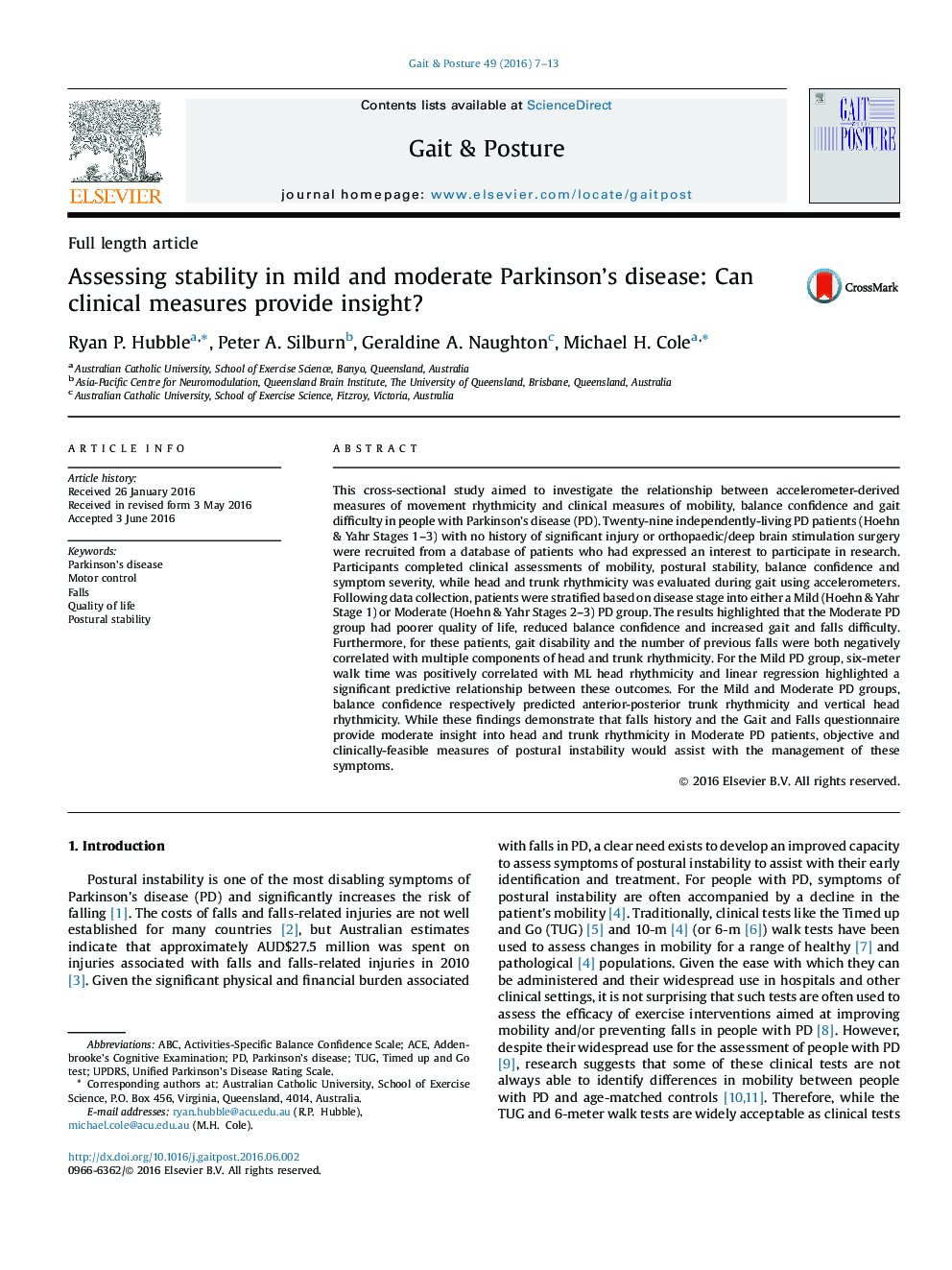| کد مقاله | کد نشریه | سال انتشار | مقاله انگلیسی | نسخه تمام متن |
|---|---|---|---|---|
| 6205375 | 1603846 | 2016 | 7 صفحه PDF | دانلود رایگان |
- Limited relationship between certain clinical tests and biomechanical measures of stability.
- Association between gait speed and stability suggests slower gait may improve stability.
- PD Gait and Falls questionnaire may offer insight into instability in time poor environments.
- There is a need for more objective clinical measures of postural stability.
This cross-sectional study aimed to investigate the relationship between accelerometer-derived measures of movement rhythmicity and clinical measures of mobility, balance confidence and gait difficulty in people with Parkinson's disease (PD). Twenty-nine independently-living PD patients (Hoehn & Yahr Stages 1-3) with no history of significant injury or orthopaedic/deep brain stimulation surgery were recruited from a database of patients who had expressed an interest to participate in research. Participants completed clinical assessments of mobility, postural stability, balance confidence and symptom severity, while head and trunk rhythmicity was evaluated during gait using accelerometers. Following data collection, patients were stratified based on disease stage into either a Mild (Hoehn & Yahr Stage 1) or Moderate (Hoehn & Yahr Stages 2-3) PD group. The results highlighted that the Moderate PD group had poorer quality of life, reduced balance confidence and increased gait and falls difficulty. Furthermore, for these patients, gait disability and the number of previous falls were both negatively correlated with multiple components of head and trunk rhythmicity. For the Mild PD group, six-meter walk time was positively correlated with ML head rhythmicity and linear regression highlighted a significant predictive relationship between these outcomes. For the Mild and Moderate PD groups, balance confidence respectively predicted anterior-posterior trunk rhythmicity and vertical head rhythmicity. While these findings demonstrate that falls history and the Gait and Falls questionnaire provide moderate insight into head and trunk rhythmicity in Moderate PD patients, objective and clinically-feasible measures of postural instability would assist with the management of these symptoms.
Journal: Gait & Posture - Volume 49, September 2016, Pages 7-13
